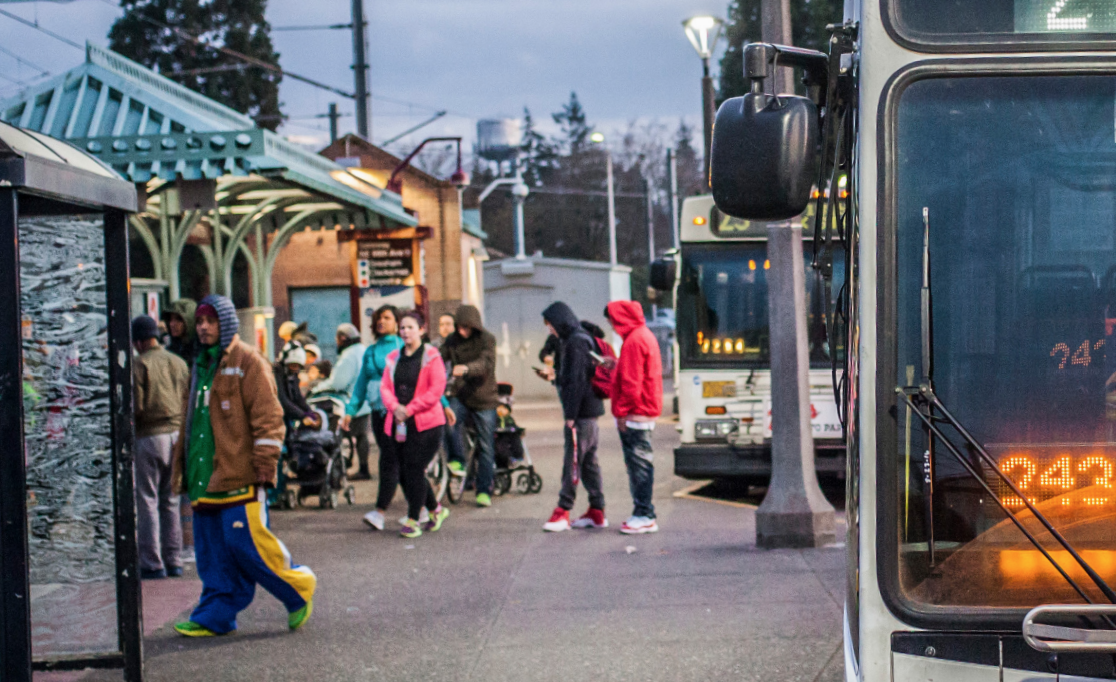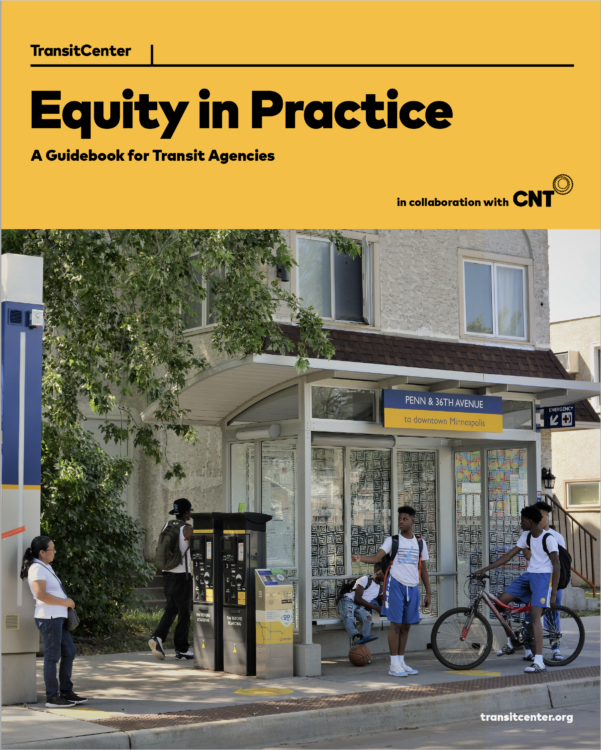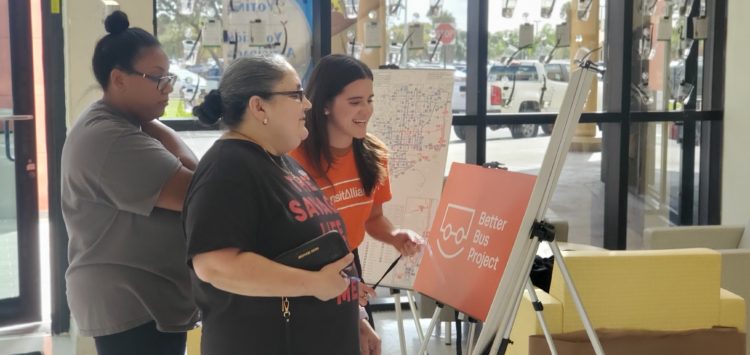
Today TransitCenter and Center for Neighborhood Technology released “Equity in Practice: A Guidebook for Transit Agencies,” which delves into how transit agencies must change internal structures and practices to deliver better results for the people with the most at stake in transit.
When transit works well, it’s a great equalizer, providing affordable access to jobs, education, and other daily destinations without barriers linked to race, class, gender, or ability. But transit has also been shaped by the systemic racism and discrimination that’s pervasive in American life.
 The best transit is most accessible to white, affluent riders, while slow, unreliable service is the norm in Black and brown neighborhoods. Transit infrastructure is often hostile to people with disabilities. Transit routes and schedules tend to cater to men’s travel patterns at the expense of women’s, and women are at greater risk of violence and harassment on transit.
The best transit is most accessible to white, affluent riders, while slow, unreliable service is the norm in Black and brown neighborhoods. Transit infrastructure is often hostile to people with disabilities. Transit routes and schedules tend to cater to men’s travel patterns at the expense of women’s, and women are at greater risk of violence and harassment on transit.
Creating equitable transit systems requires agencies to reverse these and other harmful legacies with deliberate, sustained action. And those actions start within transit agencies.
Today, transit executives are disproportionately white and male, spending priorities shortchange riders with low incomes, many agencies are structured to stifle change, and outreach and communications often overlook Black and brown communities. Making the internal culture and practice of transit agencies more equitable is foundational for making the service they provide more equitable.
Drawing on extensive interviews, “Equity in Practice” is a guide to reforming agency culture and procedures to produce transit that works best for people who have historically been marginalized. The report describes an agenda for change, illustrated with wide-ranging case studies:
Develop an equity strategy. The transit agency’s priorities should be guided by an overall vision that articulates how an equitable system benefits people who have been marginalized. This strategy then sets in motion specific actions.
Case study: LA Metro adopted an Equity Platform in 2018 and has hired full-time staff to operationalize its principles within the agency.
Prioritize equity across the whole organization. Equity should not be confined within one department, but a value embedded at every level and within every division of the agency. Service provision, budgeting, hiring and retention, and other agency functions should be grounded in the goal of achieving equitable results.
Case study: In the Twin Cities, Metro Transit’s Equity & Inclusion team is centrally embedded within the agency, drawing expertise and ideas from all divisions and influencing the full spectrum of agency functions.
Conduct inclusive outreach that builds public trust in the agency. Public outreach should be a foundational element of agency decision-making. When outreach is structured as an inclusive, collaborative, iterative process — not an afterthought that checks a box — agencies are better positioned to make decisions that address transit riders’ priorities. And by hiring community-based organizations to engage riders, agencies have made their outreach more responsive to people who have been marginalized.

Photo: Transit Alliance Miami
Case study: Transit Alliance Miami, a local advocacy group, conducted extensive rider surveys and outreach to shape Miami-Dade Transit’s redesign of its bus network.
Evaluate transit based on multiple equity metrics. Transit equity is often measured in terms of the quality of service where people live, but this fails to capture the fundamental question of what people can access using transit service. Transit agency decisions should be informed by a wider array of both quantitative and qualitative metrics that depict a more complete picture of how well the system serves people and counteracts long-standing inequities.
Case study: Dr. Alex Karner, a researcher at the University of Texas at Austin, has developed a set of quantitative equity metrics that assess transit access, which should be complemented by qualitative assessments conveying rider experiences that may otherwise be overlooked.
Set higher national standards for transit equity. Current federal oversight of transit does not hold agencies accountable for operating equitable service. While there are some civil rights protections in place, they lack teeth and only apply to changes to transit networks, not transit networks as a whole. This weak federal framework should be replaced with standards for transit equity that apply to entire transit systems, plus financial incentives for transit agencies to meet these standards.
 On the Brink: Will WMATA’s Progress Be Erased by 2024?
On the Brink: Will WMATA’s Progress Be Erased by 2024?
The experience of being a WMATA rider has substantially improved over the last 18 months, thanks to changes the agency has made like adding off-peak service and simplifying fares. Things are about to get even better with the launch of all-door boarding later this fall, overnight bus service on some lines starting in December, and an ambitious plan to redesign the Metrobus network. But all of this could go away by July 1, 2024.
Read More On Track for Success: Decoding Montreal’s REM Model for Efficient Transit Projects in the U.S
On Track for Success: Decoding Montreal’s REM Model for Efficient Transit Projects in the U.S
Why is it so difficult to build subway and light rail projects in America? Every week there’s a new story about an American transit project that is behind schedule, over budget, or “paused”. Montreal’s Réseau express métropolitain (REM) stands out as a recent North American project that has begun to address some of the challenges that have foiled so many others. What is REM getting right that other projects aren’t?
Read More